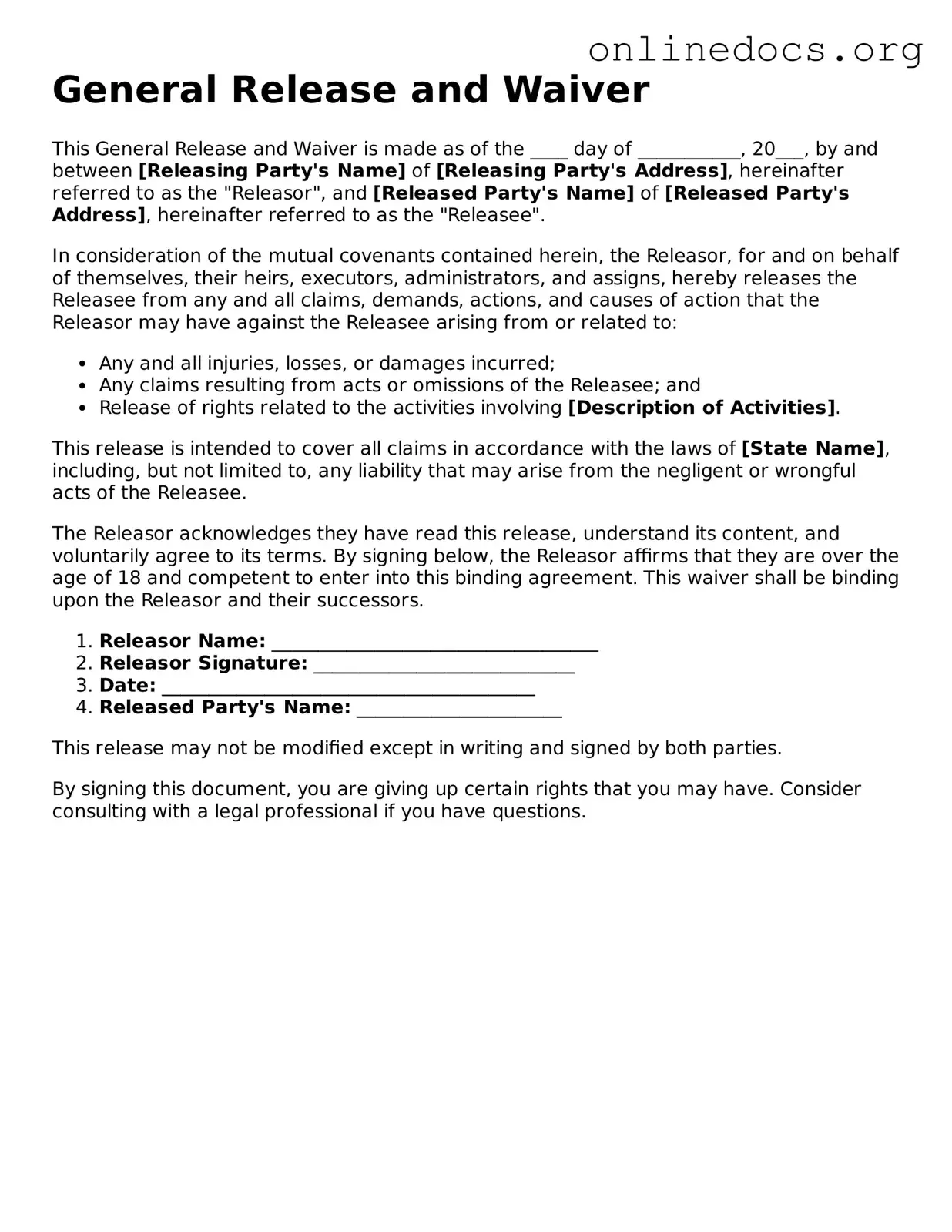The General Release and Waiver form shares similarities with the Release of Liability form. Both documents are designed to protect one party from legal claims made by another. When an individual signs a Release of Liability, they agree not to hold the other party responsible for any injuries or damages that may occur during a specific activity. This is particularly common in recreational settings, where participants acknowledge the risks involved and waive their right to sue for any resulting harm.
Another document akin to the General Release and Waiver is the Settlement Agreement. A Settlement Agreement typically arises from a dispute, where the parties agree to resolve their differences without going to court. Similar to a General Release, this document often includes a waiver of future claims related to the same issue, ensuring that once the agreement is signed, neither party can pursue further legal action regarding the settled matter.
The Non-Disclosure Agreement (NDA) is also comparable. While the primary focus of an NDA is to protect confidential information, it often contains clauses that release one party from liability if the information is disclosed unintentionally. In this way, both documents aim to limit potential legal repercussions and protect the interests of the parties involved.
Understanding the intricacies of various liability forms, including the Vehicle Release of Liability form, is essential for safeguarding your legal interests. This form explicitly releases vehicle owners from responsibility for any incidents after they transfer ownership, ensuring that risks are acknowledged by the new owner. For further details on important liability documentation, you can explore resources at https://pdfdocshub.com/.
The Indemnity Agreement is another document that functions similarly. This agreement allows one party to agree to compensate another for any losses or damages incurred. By signing an Indemnity Agreement, individuals accept the responsibility for certain risks, paralleling the waiver aspect of the General Release, which seeks to limit liability.
A Liability Waiver, often used in sports and recreational activities, closely resembles the General Release and Waiver. Participants in these activities sign the Liability Waiver to acknowledge the inherent risks involved. By doing so, they agree not to hold the organizers accountable for any injuries sustained, thus mirroring the protective intent of a General Release.
The Consent Form is also relevant. This document is commonly used in medical and research settings. By signing a Consent Form, individuals agree to participate in a procedure or study while waiving certain rights to claim damages for any adverse effects. This is similar to the General Release, as both involve informed consent and the relinquishment of legal claims.
The Hold Harmless Agreement is another document that aligns with the General Release and Waiver. This agreement involves one party agreeing not to hold another party responsible for any potential claims or damages. It is often used in contracts involving services or events, where one party seeks assurance that they will not face liability for issues arising from the other party’s actions.
The Assignment of Rights document is similar in that it allows one party to transfer their rights to another. While this document does not explicitly waive liability, it can include provisions that release the original party from future claims. This shared element of relinquishing rights connects it to the General Release and Waiver.
Lastly, the Disclaimer is a document that serves to limit liability by providing information about potential risks. While it does not require a signature like the General Release, it serves a similar purpose by informing individuals of the risks involved in a specific activity. By understanding these risks, individuals can make informed decisions, which aligns with the intent behind the General Release.
